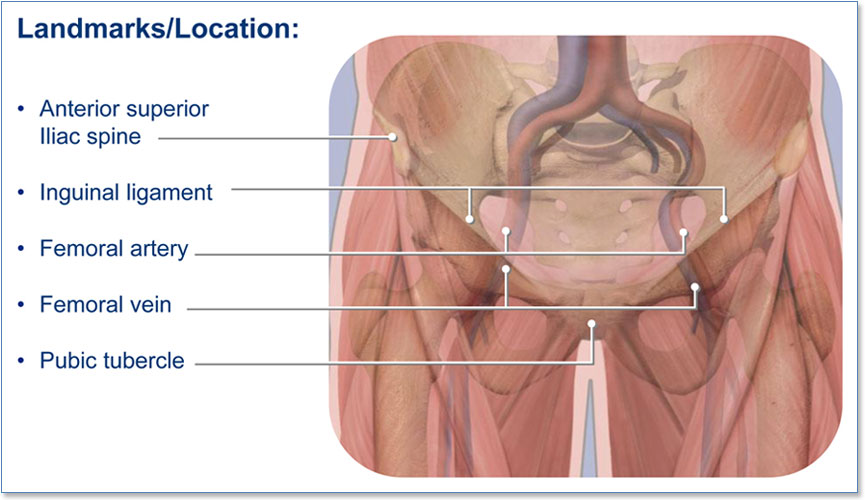| First Section Page | Page 14 of 15 | Last Section Page |
FEMORAL VEIN
(continued)

The femoral vein lies within the femoral triangle in the inguinal – femoral area (). Successful cannulation is achieved either with the use of ultrasound or via palpation of the femoral artery. The femoral vein is approximately 0.5 cm medial to the femoral artery. The femoral vein has the highest risk for infection and thrombus (). The femoral approach should be used only when no other access is available, during severe coagulation disorders or in code situations (). If vessel access is performed in an emergency situation and adherence to aseptic technique cannot be ensured, replace the catheter as soon as possible, i.e, within 48 hours. (,).
If the femoral site must be accessed, the right femoral vein approach is a better entry site because the right iliac vein is straighter and shorter than the left, providing for reduced risk of vessel damage and easier insertion. Post-insertion site bleeding and hematoma are also common in this area.